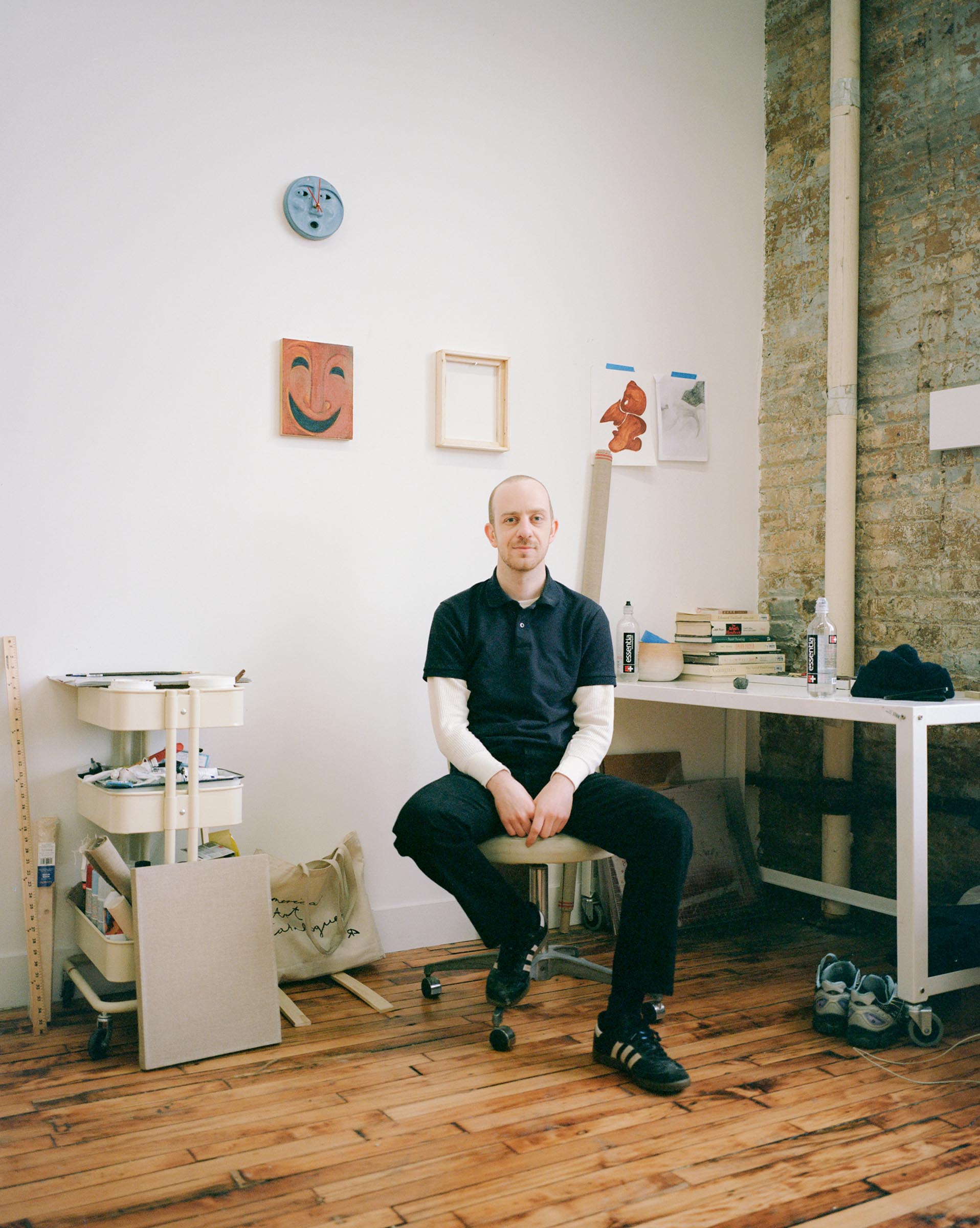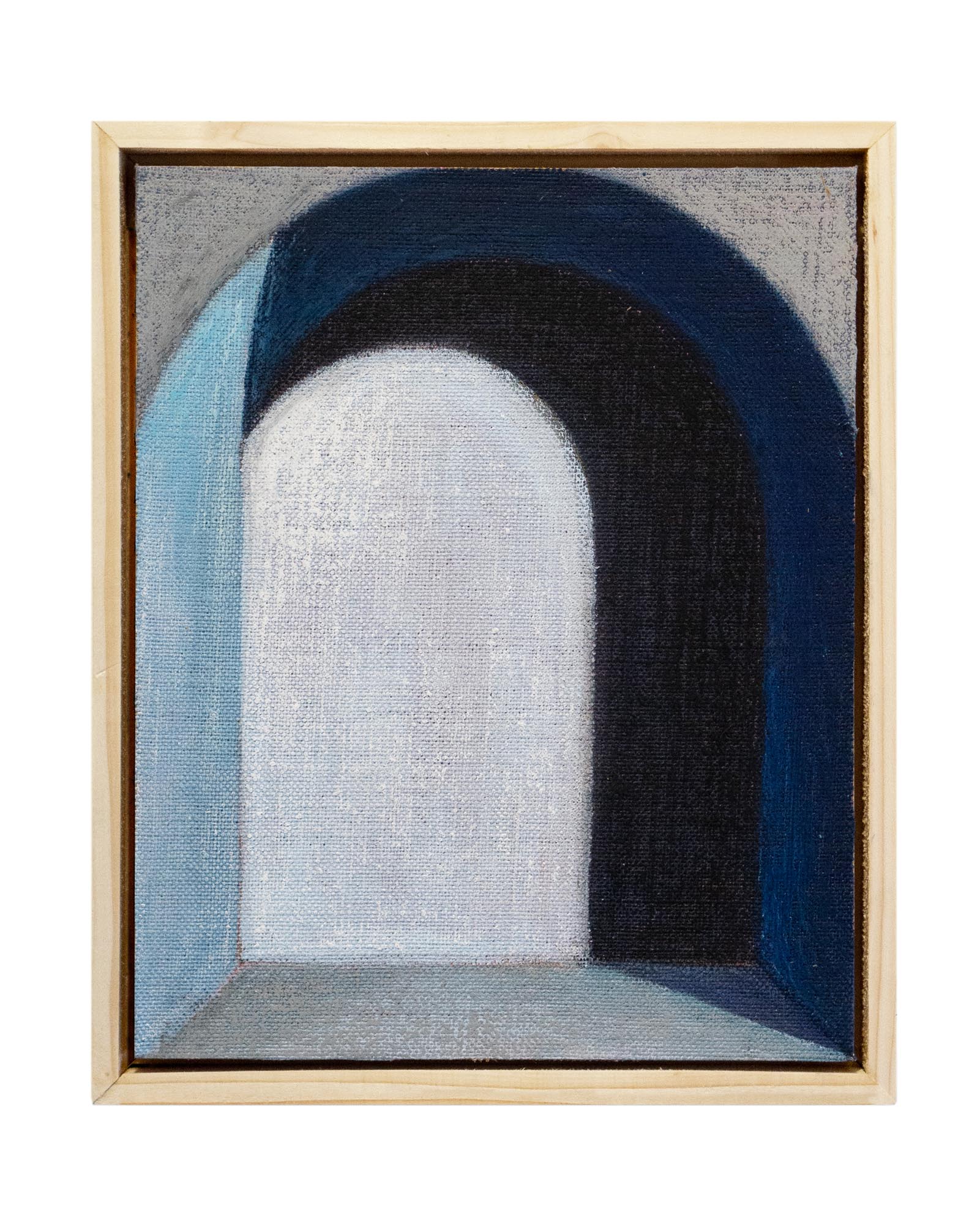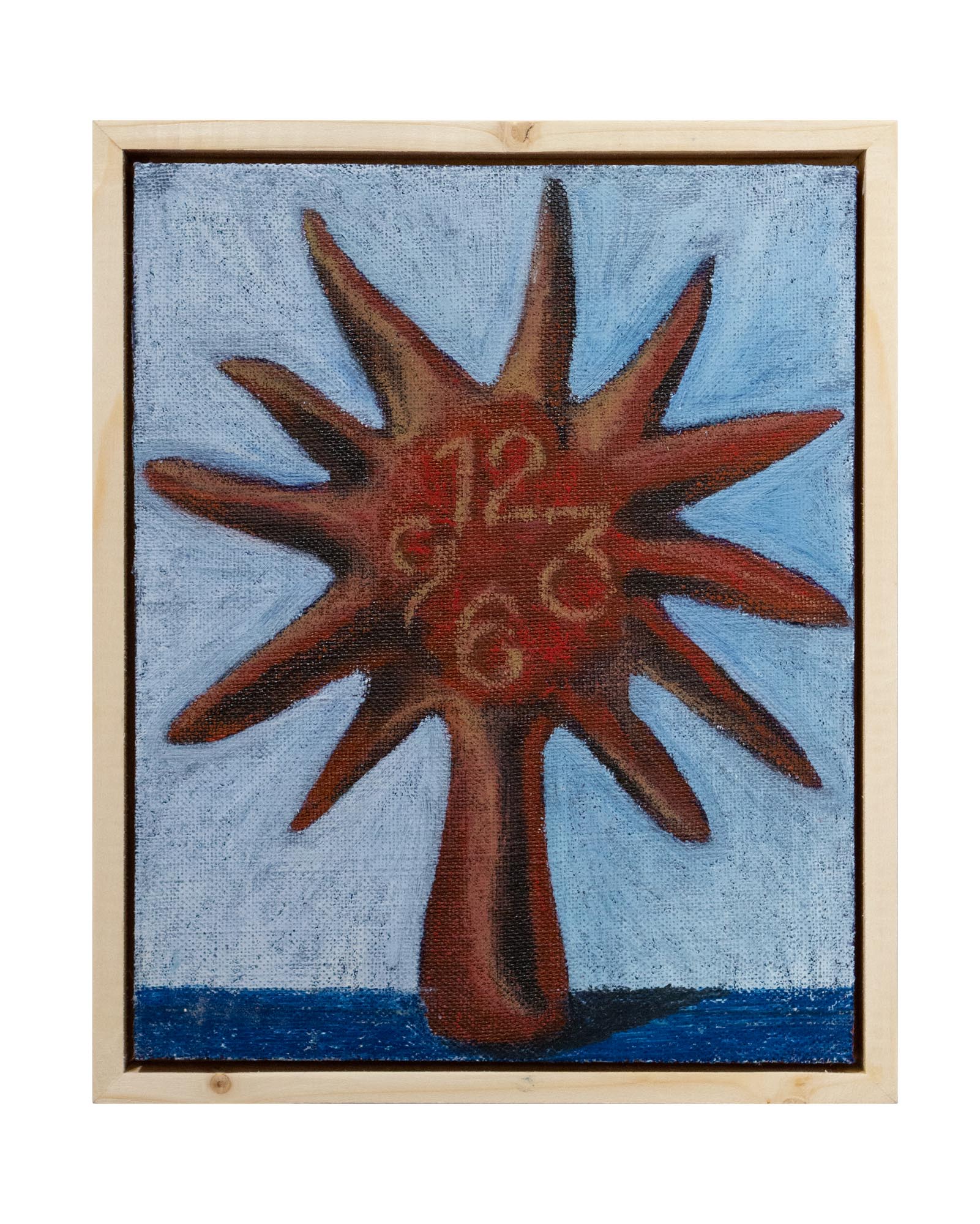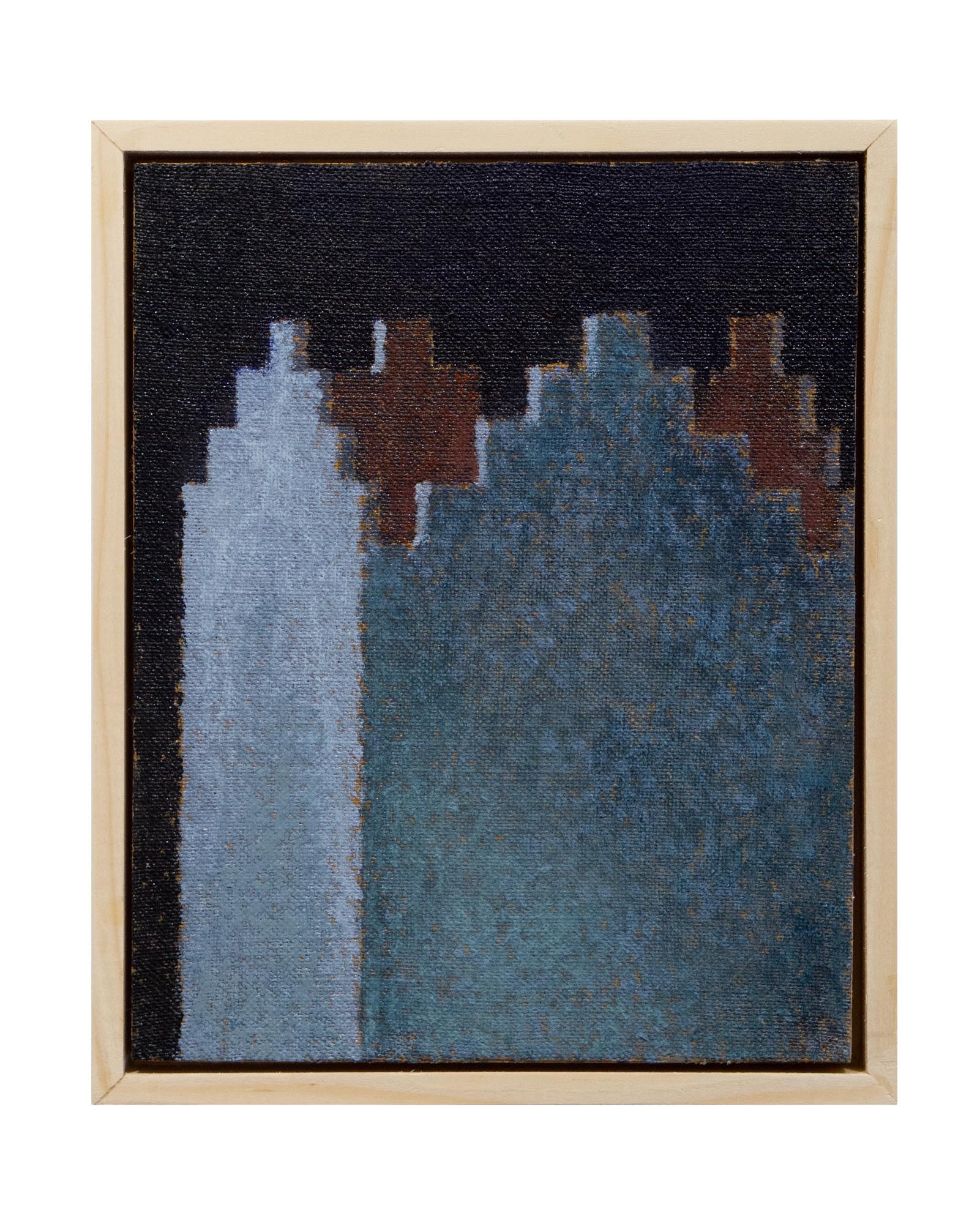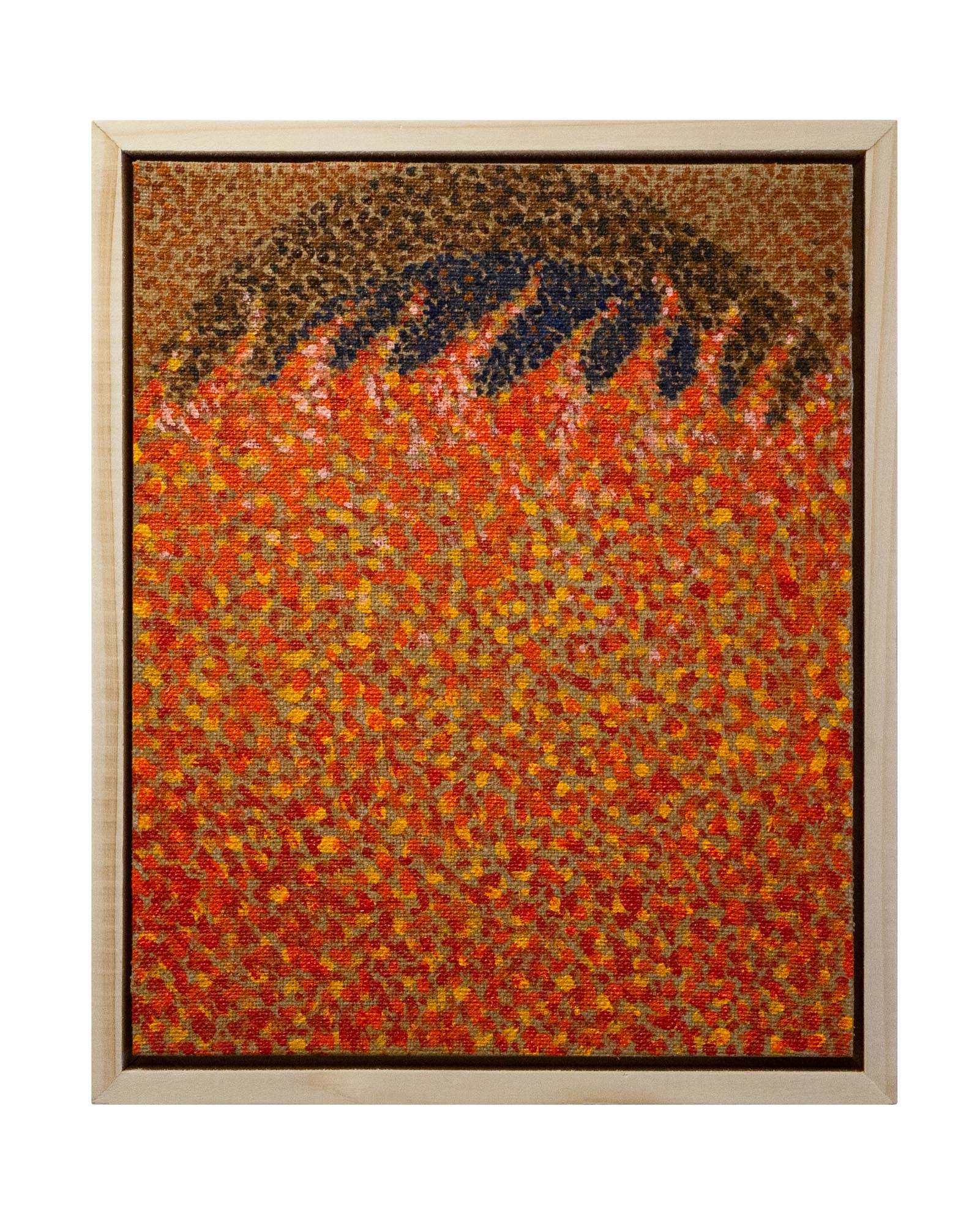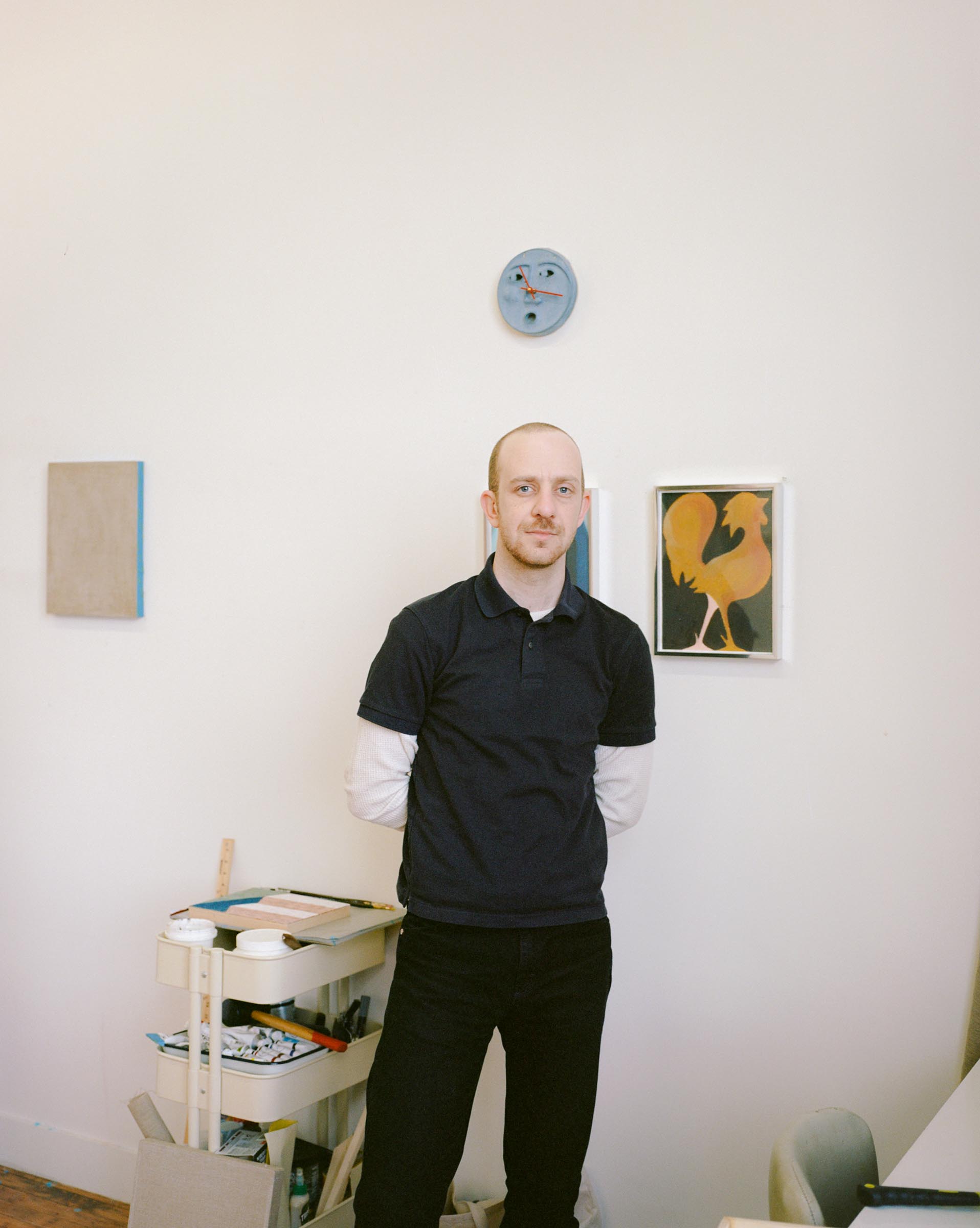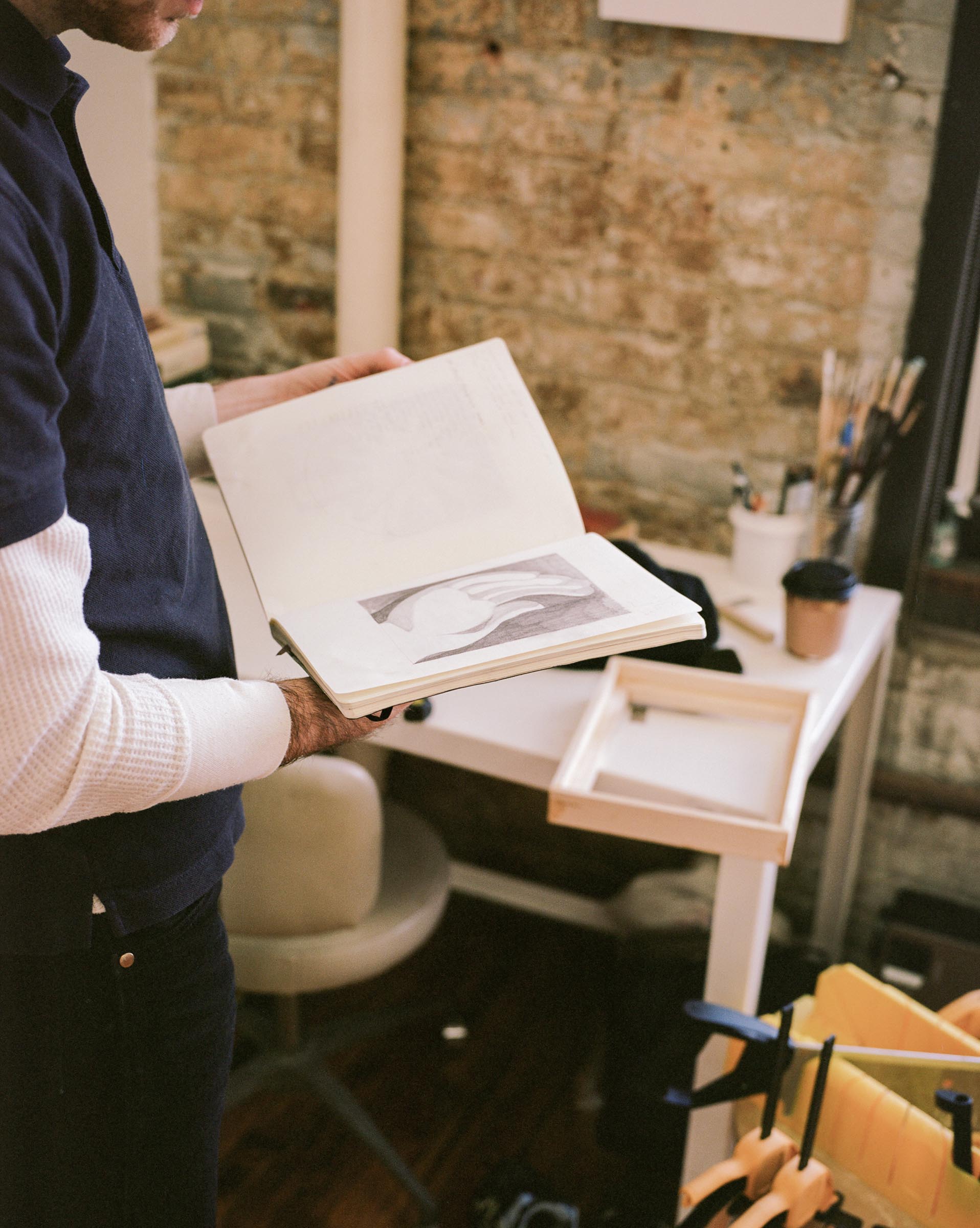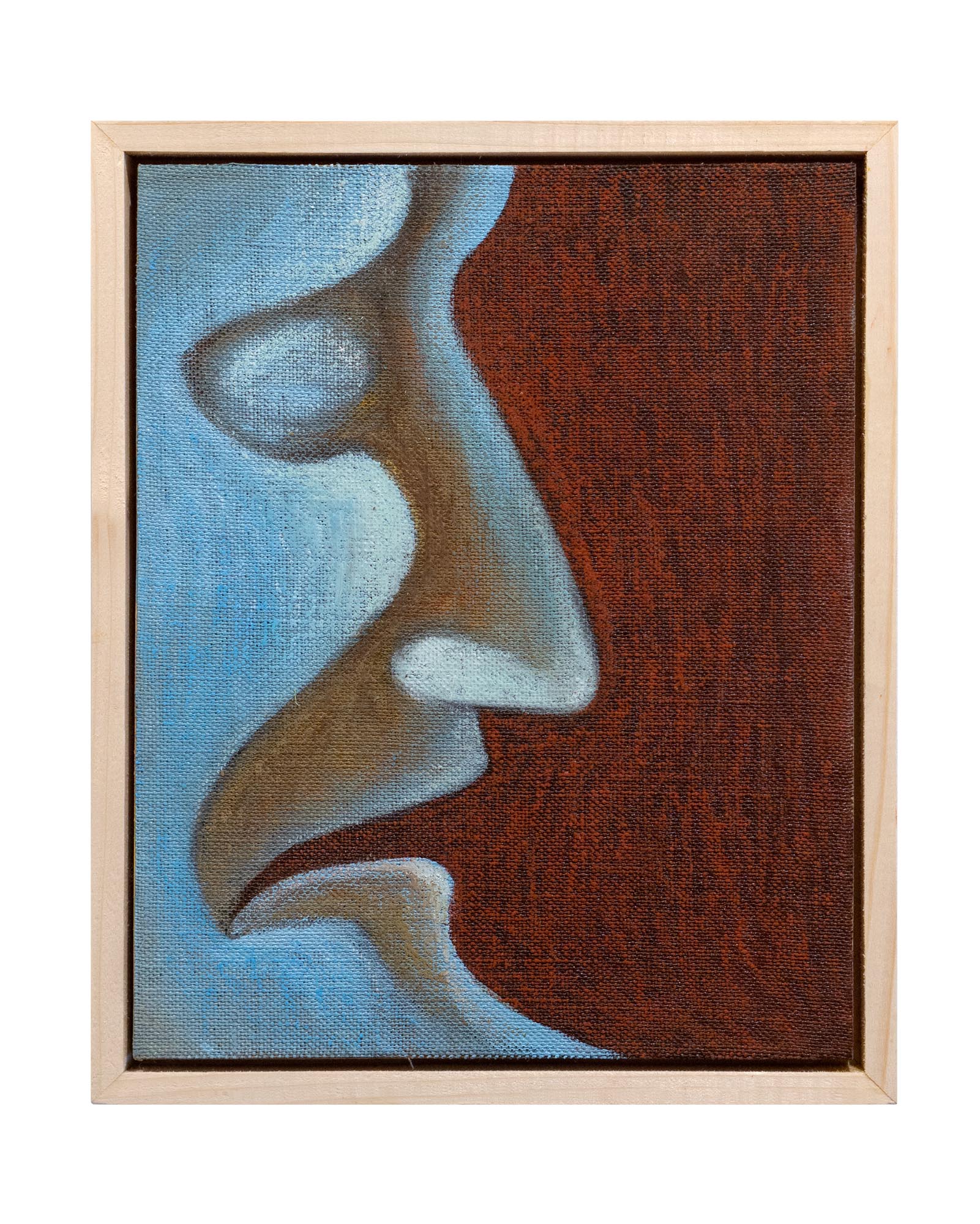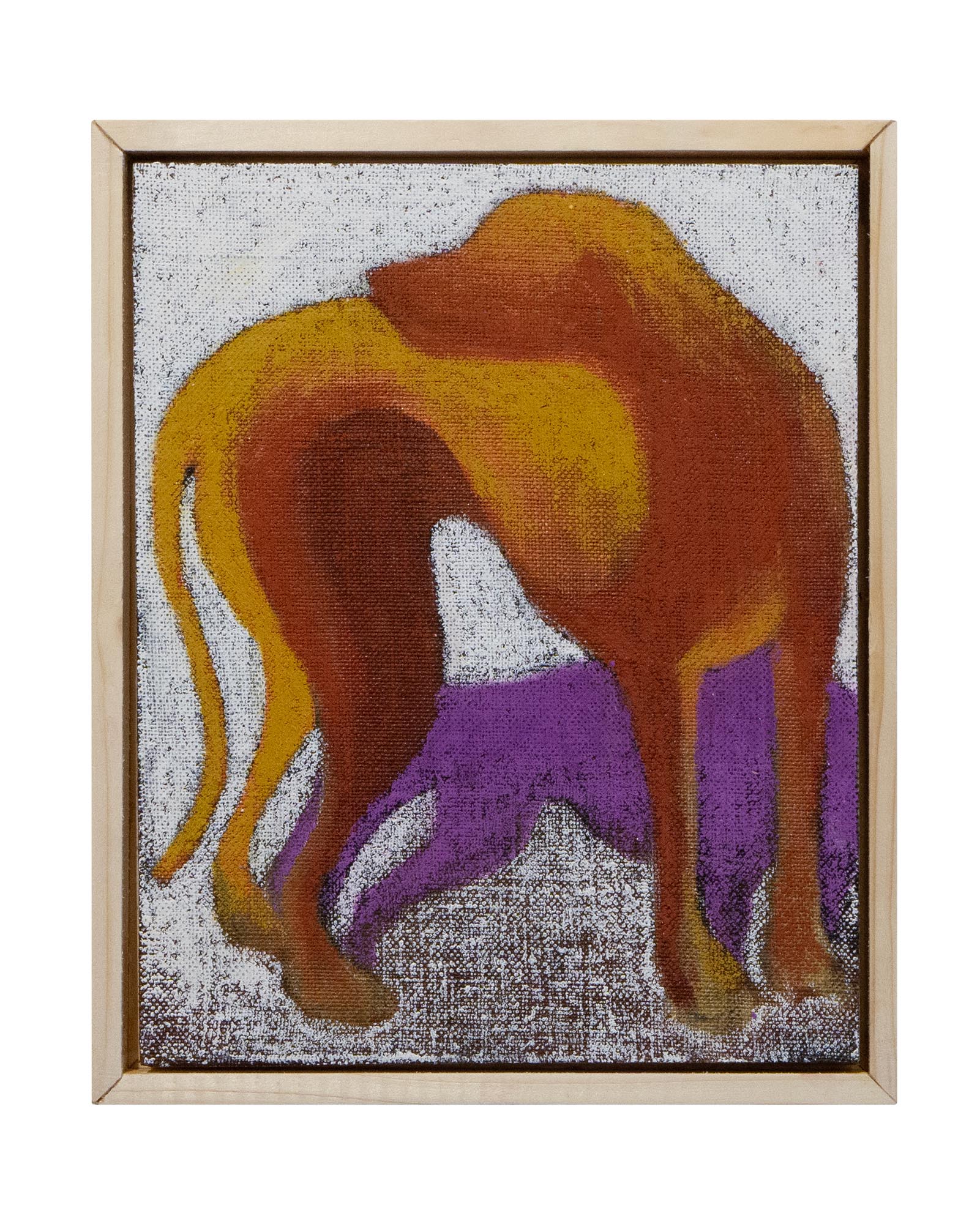How did you get into making art?
I was fortunate to grow up in a creative household with parents who encouraged my pursuits. My mother studied art history and painting in Florence, where my dad is from, and as a kid we’d go back often. Every trip we took a family picture in front of Michelangelo’s supposed self-portrait in the stone of Palazzo Vecchio. As a teenager, I took figure drawing classes, painted in my garage, and experimented with stencils and crude screen prints, but I think I started to get a little more serious when I was in high school, and began working at the Museum of Contemporary Art in Downtown LA. It wasn’t until then that I considered studying art in college.
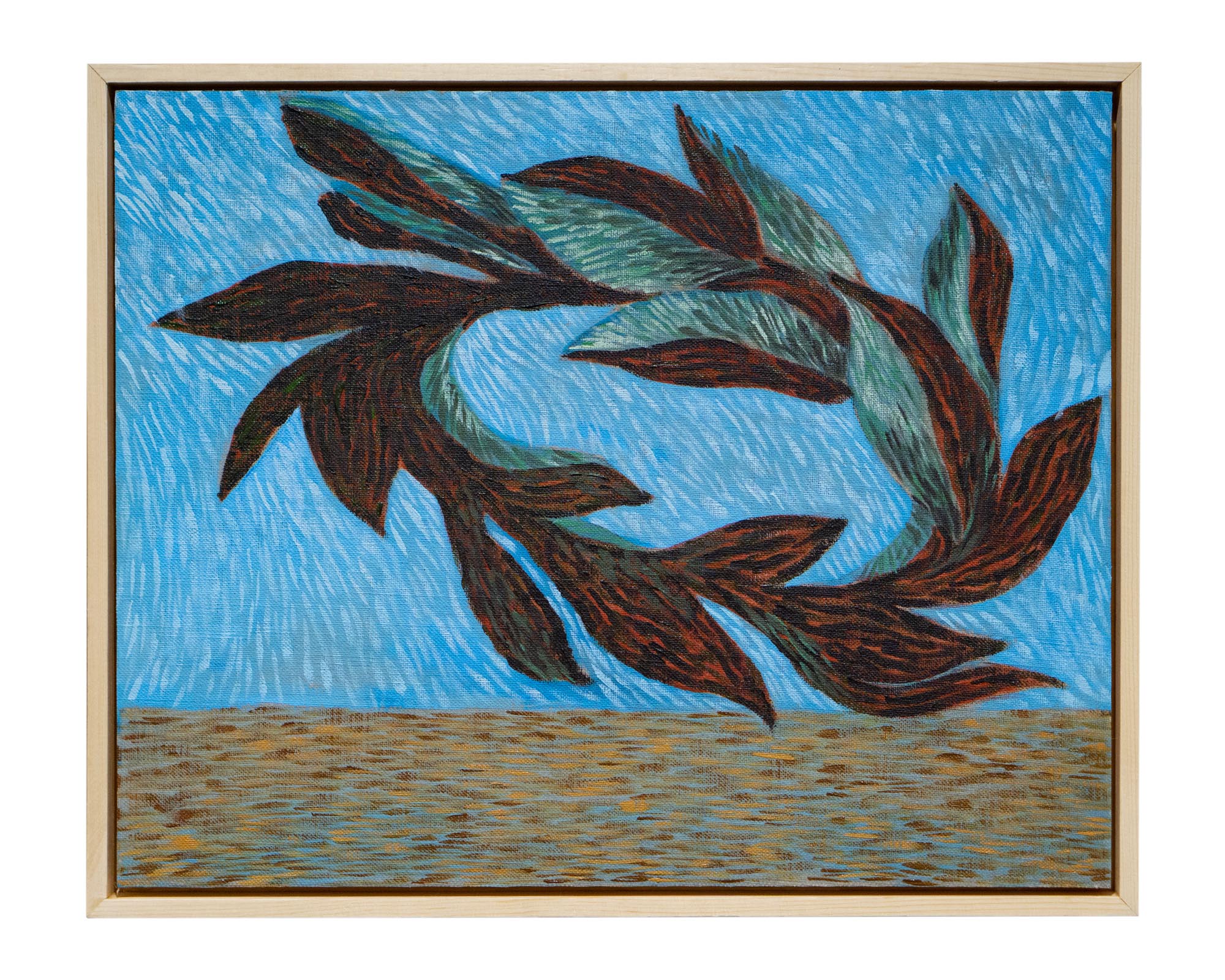
What are you currently working on?
I recently finished a series of 10 paintings for a small show at the Saturdays NYC space that revolved around the familiarity of a different world. Each piece hints at human existence, but without any proof. Objects are grounded in reality—markings of time, geometric structures, an entrance aflame—but in an environment that has no recognizable location. They can feel lost, lonely, stuck in a threshold—like being halfway through a door, not knowing what’s on either side.
I’m interested in process, and chose mediums where I could trace the history of my movements—every line, dot, smudge, and stroke cataloged.
Niccolò Debole
What inspired you to get started on this body of work?
It started with experimentation and a focus on mark-making. I wanted a more intentional practice and limited myself to working almost exclusively in ceramic and oil pastel for the last year or two, only recently bringing proper paints into the mix. I’m interested in process, and chose mediums where I could trace the history of my movements—every line, dot, smudge, and stroke cataloged.
Do you work on distinct projects or do you take a broader approach to your practice?
I don’t approach my work with any categorization in mind, and enjoy looking for the thread that ties them all together in the end, as the palettes, motifs, and symbols change. They are all individual bookmarks from the same story.
What’s a typical day like in your studio?
I end up working most evenings, when I no longer have that days obligations running around my head. I’ve been much more focused on discipline this year and have been pursuing a cumulative effect by working in layers over multiple short sittings. I do most of my thinking and sketching at home, and use my studio as an environment for productive, conscious creation. Still, I always start my sessions in the studio the same way: putting on some music, preparing my surfaces, and leafing through a couple books.
Who are your favorite artists?
There are so many—both historical and contemporary. Lately, I’ve been excited by the works of Domenico Gnoli, David Hockney, Robert Kipniss, Mary Cassatt, and Giorgio de Chirico, as well as some more recent work by Julien Nguyen, Louise Giovanelli, Dylan Solomon Kraus, and Louis Eisner.
Where do you go to discover new artists?
Books, friends, other artists, newsletters, Instagram, but mostly from trying to see as much art in person as possible.
Learn more about the artist by visiting the following links:
